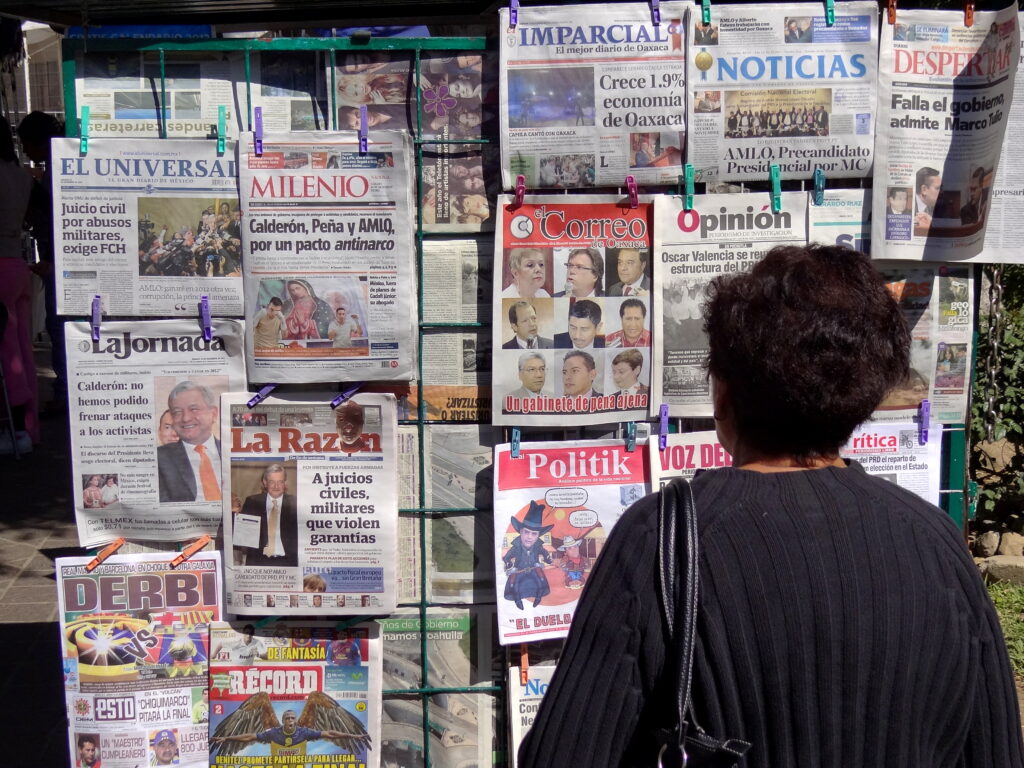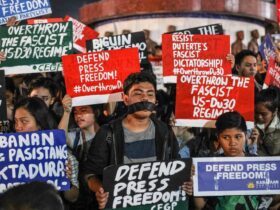Outside the Government Palace in Xalapa, the capital city of Mexico’s state of Veracruz, flowers and dim candles don the grim makeshift shrines of local political activists and photojournalists Rubén Espinosa and Nadia Vera. Onlookers heed these memorials for mere seconds because such deaths are unsurprising and, devastatingly, expected by most.
Like many cities of Veracruz, Xalapa gains its seemingly tranquil exterior through a wall of deception. In light of its recent entry into drug and corruption-driven violence, Xalapa is an exceedingly dangerous place for those who attempt to divulge its impunity. Therefore, a persistent journalist’s success can have dire consequences, and the former rarely exists without the latter.
Such grievances are not limited to Veracruz.
A history of journalistic endeavors in Mexico paints a bleak picture that is statistically more severe than journalism in a war-torn Afghanistan. The Committee to Protect Journalists (CPJ) recorded that 147 journalists and media workers have been deliberately killed in the Latin American country in the past decade, while 78 were killed in Afghanistan. CPJ is an autonomous department within the Veracruz state government that aids—with their research agents and technology—investigations into the disappearances and murders of journalists in Mexico. Of the 147 deaths in Mexico, a staggering 68 were reported to have confirmed motives.
These numbers, as large as they already are, discount the number of deaths gone unreported.
What makes Mexico, in particular, this threatening to journalists?
In 2006, former President Felipe Calderon declared war on institutions and persons that perpetuated organized crime—a war that still persists. For decades, Mexico has been the largest foreign supplier of cocaine, methamphetamine, and marijuana. As a result, the president wanted to challenge the country’s unrelenting drug trade that is underpinned by large and well-connected drug cartels. Since a year after the president’s decision to launch this war, the government of Mexico has spent around 54 billion dollars on defense and security.
Interestingly, in Congressional Research Service reports analysts of Latin American affairs claim that this cash influx did more harm than good. It opened a dangerous door to corruption, a great deal of which aided cartels’ retaliation to a sudden, looming presence of military enforcement.
Cartels and their corrupt beneficiaries felt threatened.
And they made this disruption to their operational strength known.
An unwavering surge of violence in the country followed, leading to over 300,000 homicides. Organized criminal groups proceeded to fight each other in loud attempts to assert power: rival drug cartels, in response to governmental interference, fought over land, personnel, military equipment, and more.
Naturally, this was no environment for sniffing around: drug lords preferred to keep their transactions in the dark.
To better achieve covertness, rival drug cartels even targeted vulnerable civilian groups—in hopes of recruitment—to help guard their communities and factories. This tactic of using innocent lives to aid criminal agendas is no stranger to a drug-immersed Mexico. The country’s most militarily powerful, as attested by CPJ, drug gang Jalisco New Generation Cartel (CJNG), formerly known as “Los Mata Zetas,” would often coerce townspeople into acting as human shields against rival cartels and military troops.
Individuals who were and still are disadvantaged by the government’s political system are especially vulnerable to such manipulation. In exchange for working for cartels, they are promised financial rewards and recognition that they otherwise lack: a common method of deceiving townspeople into exploitation. They are not guaranteed protection from their government, so, as a last resort, they seek it from criminals.
Habacuc Solorazano is a 40-year-old farmer associated with CJNG, leading the civilian movement that helps the drug cartel against military threats.
In an interview for ABC News conducted by reporters in Anguilla, Mexico, Solorazano said that “if (the police) try to come in here again, we’ll put 2,000 people out here to stop them.” He added that the last time an army squad attempted to stop trades on the dirt roads outside Jalisco territory, he gathered around 500 locals and farmers to march and cross a river to block them.
Much like the Jalisco cartel’s headquarters and central factory campsites, most of Mexico’s big players in its drug trade remain hidden from the public eye. To find and intercept obscure areas for information, journalists often get involved with very dangerous people and operations. In the first month of this year, four reporters were ruthlessly killed. On Jan. 10, journalist José Luis Gamboa Arenas was found dead—in the Floresta neighborhood in Veracruz—with at least seven stab wounds.
Gamboa’s death begs the question: who had a motive?
Israel Hernández, executive secretary of the Veracruz State Commission for Attention to and Protection of Journalists (CPJ), said that authorities carried out investigations to find an answer. Some findings revealed high traction content on Gamboa’s news website Inforegio, another news website that he co-founded called La Noticia, and his Facebook, Twitter, and Youtube accounts. He regularly explained and commented on Vercruz’s security issues on these outlets. He often called out the state’s justice system, saying that most crimes against journalists were not prosecuted.
Interestingly, Gamboa’s opinions were centered around the government and its negative actions, or the lack thereof, rather than on drug cartels. Given his focus on the institutional failure to respond to organized crime within the state, his viewers and fans speculated that the government itself was involved in his murder.
José Luis Gamboa’s death, like that of many other media workers and journalists in Mexico, took place under the rule of President Andrés Manuel López Obrador (AMLO). During a news conference in Hermosillo, Mexico, around a month after Gamboa’s death, President López Obrador was far from offering assurance to grieving families and worried residents regarding an abundance of violent crimes against journalists. Instead, he spent his time speaking with contempt towards independent, opinionated voices, and specifically towards one of Mexico’s most famed journalists, Carlos Loret de Mola.
Loret de Mola writes for a Spanish Post Opinión segment of The Washington Post. In his published works, he often criticizes AMLO’s government, discussing corruption and power-plays that exist within it. One such piece addressed the president’s son and his indulgent parties and vacations.
In a futile attempt to prove that Loret de Mola was a hypocrite and to divert attention away from his son, President López Obrador publicly shared the media figure’s private financial information during the news conference. He, however, presented false records that indicating that Loret de Mola’s income was much higher than the journalist claims. AMLO also threatened to have tax authorities confirm these financial records, further willing to violate privacy laws in Mexico.
In the weeks following Gamboa’s death, three other journalists were killed. Freelance crime photographer Margarito Martinez was found with gunshot wounds in Tijuana. Lourdes Maldonado Lopez, a news reporter, was found inside her car. Videographer and editor Roberto Toledo was shot thrice in Zitacuaro.
Three of the four media workers had reported that they received mysterious threats. Amid such violence and uncertainty, the president’s misuse of livestream events to discredit and harass journalists has been widely discouraging.
In an interview for Reuters, a spokesperson in Mexico for the CPJ, Michael O’Connor said that “organized crime is in control of the state’s politics, police, and the justice system.” As a result, the government does not do much at all, even if and when they offer journalists protection. Amidst the impunity and corruption that has proliferated in Mexico, reporting about the country’s authorities would entail demeaning their power and, more importantly, exposing their criminal involvements.
Despite recent reforms to Mexico’s legal and institutional anti-corruption framework—like Ley3de3, a law created by Mexico’s civil society that requires three specific declarations from public servants to prevent corruption—providing a safe space for journalists in the country still seems grim.
That being said, more scope for improvement exists outside this political sphere. There are several independent, nonprofit organizations and journalists-turned-activists that work to protect the right of journalists to gather and report the news without harm. Alejandro Castro Flores is a freelance journalist based in Quintana Roo who, in January 2022, helped organize demonstrations across the nation to protest for better protection and support for journalists in Mexico. In an interview with The Christian Science Monitor, he said that seeing other journalists and activists support his demonstrations is a source of hope. He added that his “generation is planting some seeds, but those coming up behind us are going to change the entire landscape.”






